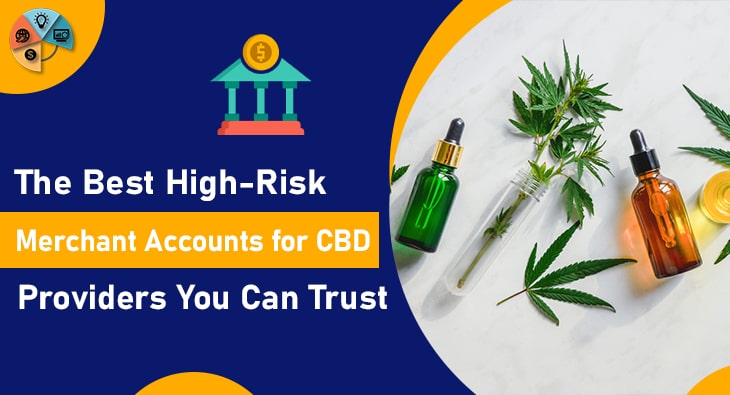Introduction to High-Risk Merchant Accounts
High-risk merchant accounts on Shopify are designed for businesses that operate in sectors deemed to have a higher likelihood of encountering fraud or chargebacks. These specialized accounts are crucial for companies in certain industries to accept payments smoothly. High-risk businesses often operate in areas such as adult entertainment, gambling, travel services, and subscription models, which are more susceptible to transaction disputes and other financial risks.
Merchants with these accounts usually experience more stringent requirements from payment processors. These requirements can include higher transaction fees and the need for rolling reserves to cover potential chargebacks. Despite these challenges, having a high-risk merchant account allows businesses in these volatile sectors to continue operating and processing payments without major disruptions.
Understanding the nuances of high-risk merchant accounts can help Shopify business owners navigate their specific needs better. For example, merchants with limited processing history or those offering free trials with negative option billing may also be classified as high-risk. It’s essential for these business owners to prepare for the associated requirements and costs.
By being informed about what a high-risk merchant account entails, Shopify merchants can better manage their operations and ensure they remain compliant with their payment processors’ terms and conditions.
Some Related Blogs
- Is It Worth Getting High-Risk Merchant Services for Your Business?
- How to Switch Merchant Accounts for Your Small Business: A Step-by-Step Guide
- Navigating the Challenges of High-Risk Payment Solutions in 2025
- How to Save Money with the Right Merchant Account for Your Small Business
Why Shopify Merchants May Be Considered High-Risk
Certain business types on Shopify are more frequently labeled as high-risk due to their inherent characteristics. Industries such as adult products, gambling, travel services, e-cigarettes, and subscription-based models tend to experience higher rates of chargebacks and disputes, which is a primary reason for their high-risk designation.
Several criteria can lead to a merchant being categorized as high-risk. A notable factor is a history of excessive chargebacks, which signals to payment processors that there might be recurring issues with customer satisfaction or fraudulent transactions. Additionally, high average transaction values can also contribute to this classification because they represent a higher financial risk if disputes arise.
Operating in a sector prone to fraud significantly increases the likelihood of being considered high-risk. This is often the case for businesses that deal with digital goods or services, where verifying the legitimacy of a transaction can be more challenging. Merchants offering free trials with negative option billing might also be classified as high-risk, especially if they lack extensive processing history.
Understanding these risk factors is crucial for Shopify merchants. Recognizing why a business might be flagged as high-risk can help merchants better prepare for the associated challenges, such as higher fees and stringent contract terms. By being proactive, merchants can take steps to mitigate some of these risks and improve their standing with payment processors.
Challenges Faced by High-Risk Shopify Merchants
High-risk merchants on Shopify encounter several hurdles that can impact their operations. One significant issue is the elevated transaction fees imposed by payment processors. These increased costs can affect profit margins and make it more challenging to remain competitive. Additionally, high-risk accounts often require a rolling reserve, which involves setting aside a percentage of sales to cover potential chargebacks. This can impact cash flow, making it harder for businesses to invest in growth opportunities or manage day-to-day expenses.

High-risk merchants also face more stringent contract terms. Providers might impose monthly minimums, longer contract durations, and stricter termination clauses. These terms can limit flexibility and make it difficult for businesses to switch providers if they are unhappy with the service or terms offered.
Another challenge is the heightened scrutiny from payment processors. High-risk accounts are subject to more frequent reviews and audits, which can be time-consuming and stressful for business owners. This increased oversight often includes compliance with more rigorous standards, requiring merchants to maintain meticulous records and adhere to strict guidelines to avoid penalties or account suspension.
Fraud prevention measures are also more demanding for high-risk merchants. These businesses must implement robust security protocols to protect against fraudulent transactions, which can involve additional costs for advanced fraud detection tools and services. Ensuring compliance with these measures is crucial but can be a resource-intensive process.
The perception of risk can also impact customer relationships. High-risk merchants may face challenges in building trust with their clientele, as consumers might be wary of potential issues like payment disputes or data security concerns. Overcoming this perception requires consistent efforts in customer service and transparent communication to reassure customers of the business’s reliability.
These factors combined can create a challenging environment for high-risk merchants on Shopify. Navigating these difficulties requires careful planning, financial management, and a proactive approach to compliance and customer relations.
How to Open a High-Risk Merchant Account on Shopify
Opening a high-risk merchant account on Shopify involves several important steps. First, identify payment processors that specialize in high-risk accounts. This involves researching providers that understand your industry and offer tailored solutions.
Prepare all necessary documentation to support your application. This usually includes business licenses, bank statements, and processing history. Having detailed and accurate information ready will help demonstrate your business’s legitimacy and stability, increasing your chances of approval.
When applying, be ready to explain your business model and how you intend to manage risk factors such as chargebacks. Payment processors may ask for additional details about your customer base and marketing strategies to better understand your risk profile.
Lastly, carefully review the terms and conditions offered by the payment processor. Ensure that you fully understand any fees, contract terms, and other requirements associated with the high-risk merchant account. Being well-prepared and informed will help you successfully open and manage a high-risk merchant account on Shopify.
![]()
Email us anytime!
Email customer service 24/7
![]()
Call us anytime!
Reach customer care 24/7 at +1 (727) 330-3944



3 thoughts on “Understanding High-Risk Merchant Accounts on Shopify: What You Need to Know”
Comments are closed.